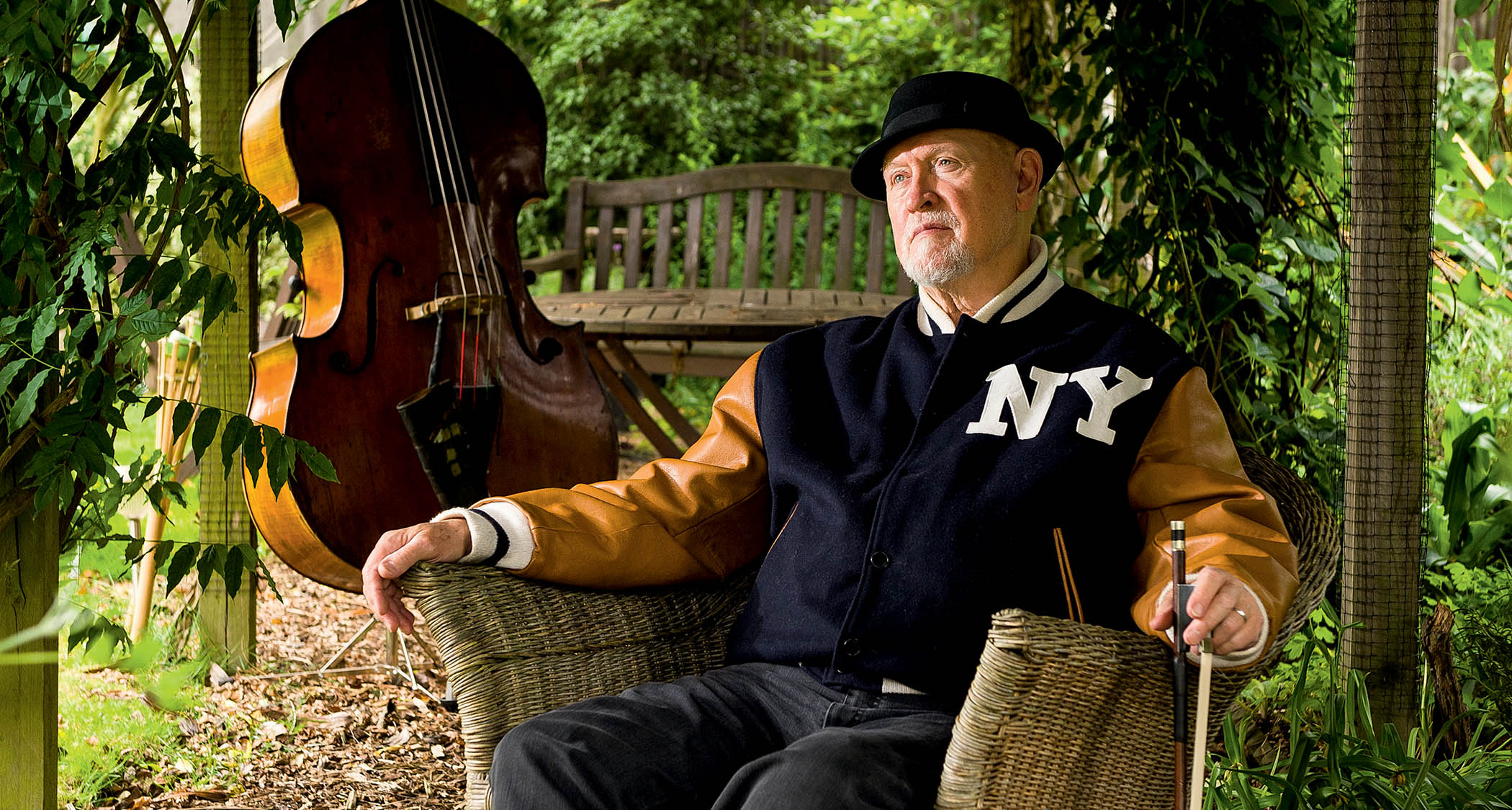Best budget guitar amps under $500 in 2025: cost-cutting amplifiers for the budget-conscious player
Get great sounds and features without blowing your budget – from affordable tube amps to wallet-friendly digital modeling amps and everything in between
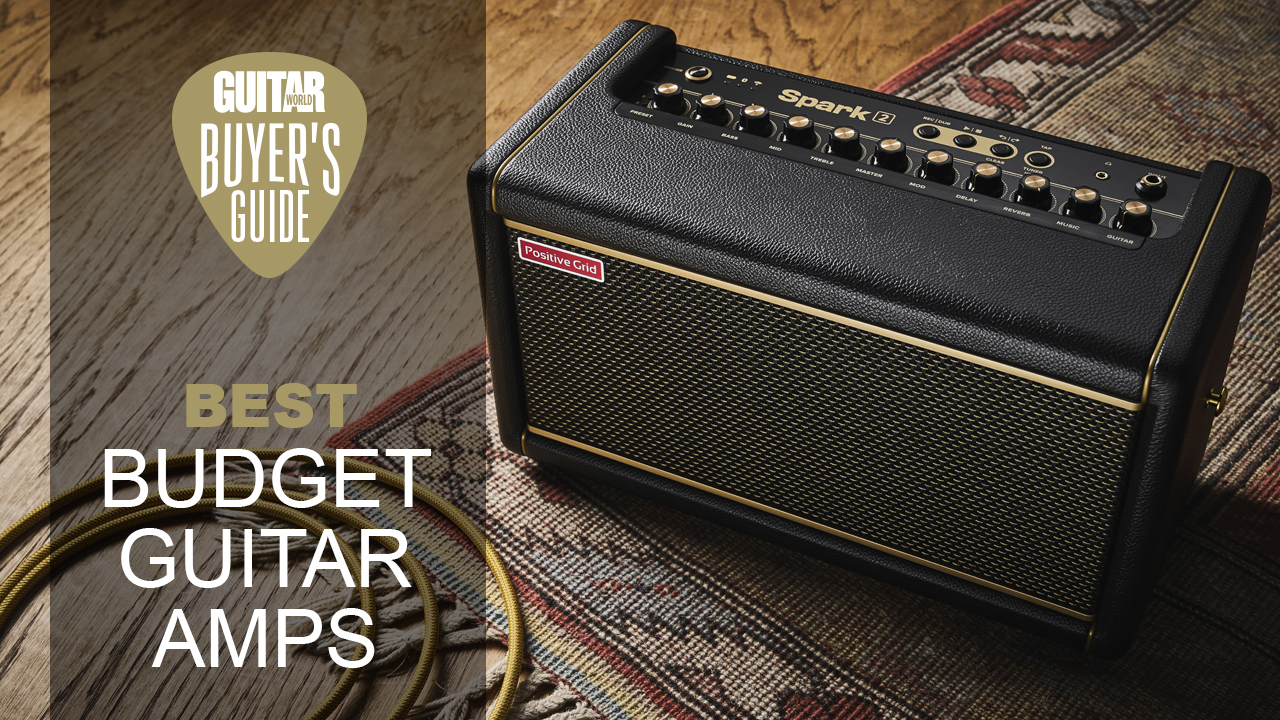
Buying budget isn't as much of a hindrance these days as it once was in the past. Nowadays if you're buying one of the best budget guitar amps you can get a lot for your money, especially with the advent of modeling tech.
If you're looking for a new amp, there's one thing you need to think about – its intended use. If you're just practicing at home, you can pretty much have your pick of the bunch, just avoid those ultra-loud tube amps. If you're planning on gigging your amp, however, you'll need to make further considerations. Your chosen amp will need to have enough power to compete with a heavy-handed drummer, vocalist through the PA, and perhaps another guitarist.
We've arranged our favorite guitar amps under $500 by use case to make it easier for you to narrow your selection down. Whether you're just learning your first chords at home or you want to get out on the road and play shows, we've got an amp that will do the job for you at a great value price point.
If you want to learn more about guitar amps before you buy, we've got an extensive FAQs section that answers loads of common questions. To see the best budget guitar amps you can buy right now for less than $500, just keep scrolling...
On the hunt for guitar gear savings this Black Friday? Shop our handpicked selection of the best Black Friday guitar deals.
Our top picks
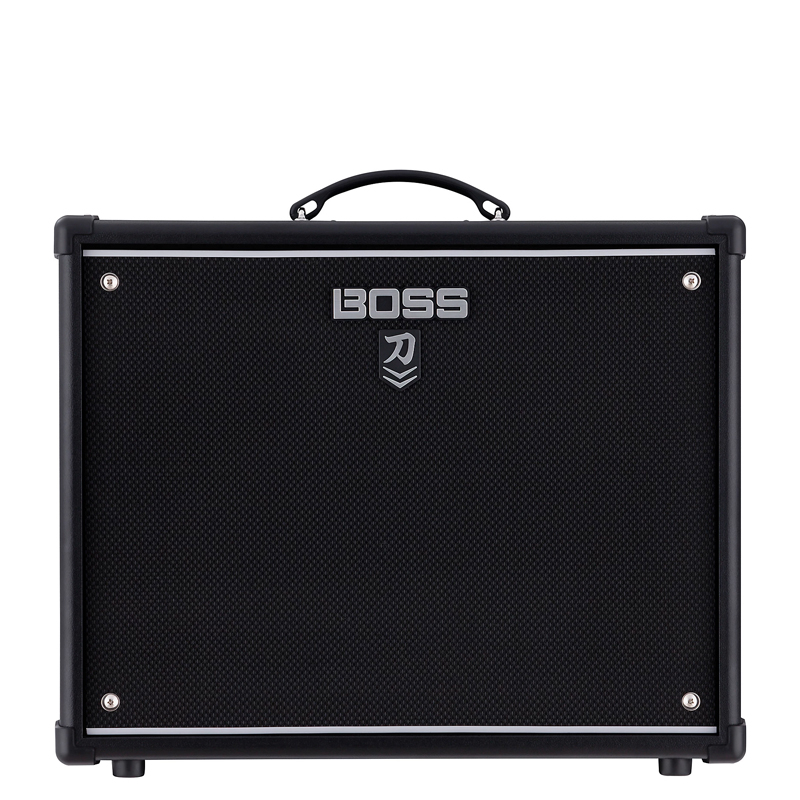
The latest edition of Boss' incredibly popular Katana amps builds on the already rock-solid foundations, adding an additional amp model into the mix. Each of the amp models has been revamped, delivering ever more realistic tube tones.
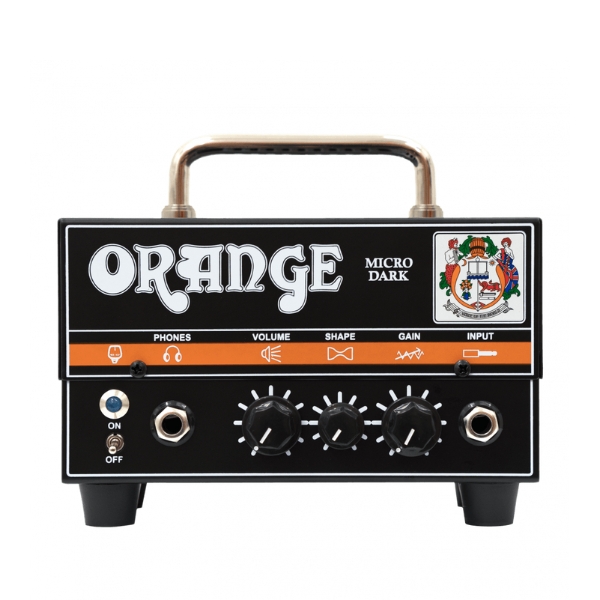
Possibly the world’s only bona fide amp that can fit inside a guitar case, the Micro Dark is nevertheless packed with features that include volume, gain, and shape controls, a 1/4-inch headphone output, speaker output (minimum 8-ohm load) and an effects loop.
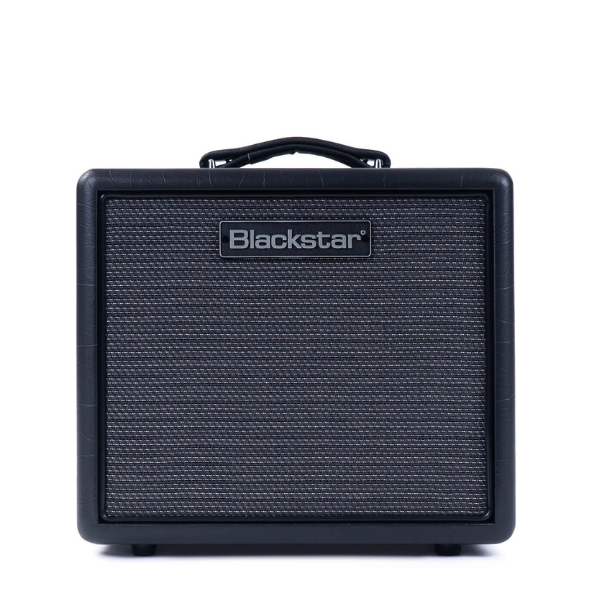
There's not loads of choice when it comes to budget tube amps, but if you must have tube tone, we'd go for the Blackstar HT-1R. It's just about below the $500 mark, and it's also neighbor-friendly thanks to its silent recording output.
Best budget amp overall
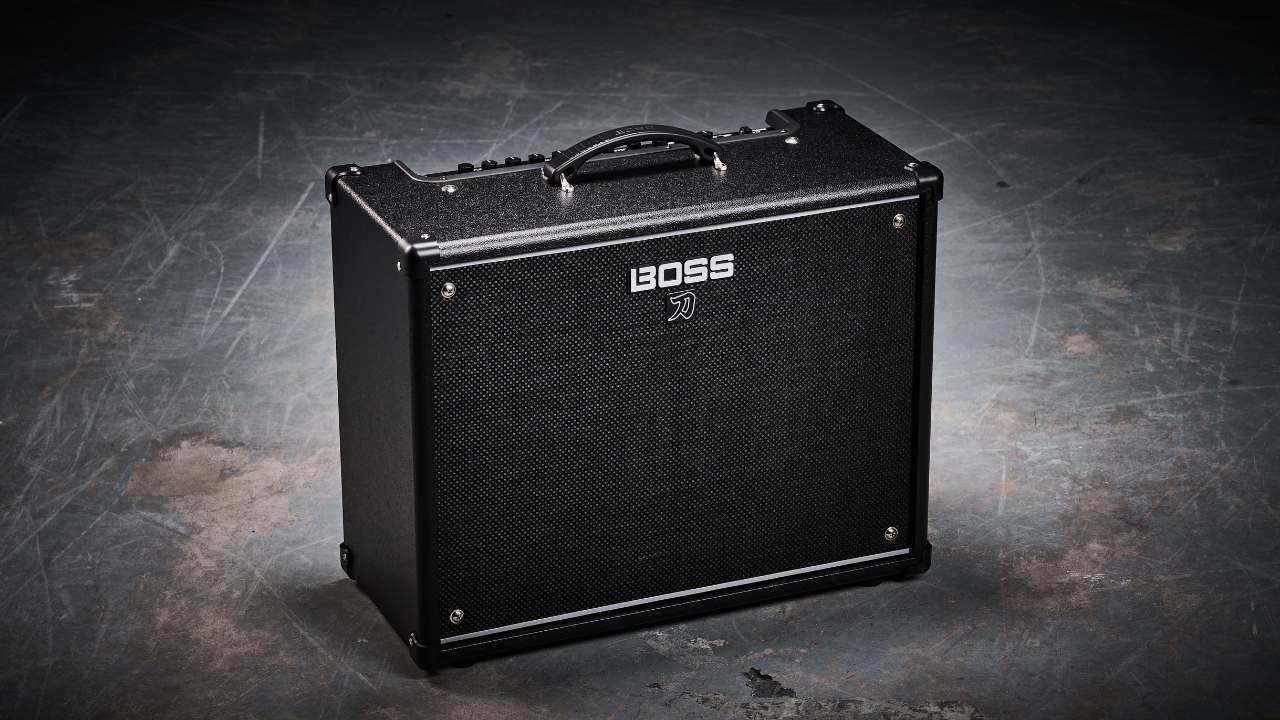
1. Boss Katana-100 Gen 3
Our expert review:
Specifications
Reasons to buy
Reasons to avoid
✅Buy if you want the most reliable amp: For us, the Boss Katana is not only a stellar-sounding practice amp but one of the most dependable on this list. It'll cover any genre, and is great for practicing and small gigs.
❌ Avoid if don't need effects: As you'd expect, this amp comes loaded with the legendary effects Boss is known for, so if you don't need them, you may want to look elsewhere.
Even ignoring their affordable price tags, Boss’s Katana modeling amps have earned a reputation as some of the best guitar amps you can buy today, and the latest Gen 3 edition only bolsters that reputation.
This solid-state 100W model is gig-ready, and now boasts six amp characters (Clean, Crunch, Pushed, Lead, Brown, and Acoustic), plus variations for each. As it's a Boss amp, you also get 60 of their most famous stompboxes packed into just one amp, giving you endless varieties of tone options.
Our testing proved that it's the tonal control that really makes the Katana a top buy, however, with adjustable cab resonance options, Power Control and easily recordable mic’d cab-emulated outputs. It's worth noting the prices we've listed are for the 2x12" combo, but a 1x12" is also available for a little less.
Best budget guitar head
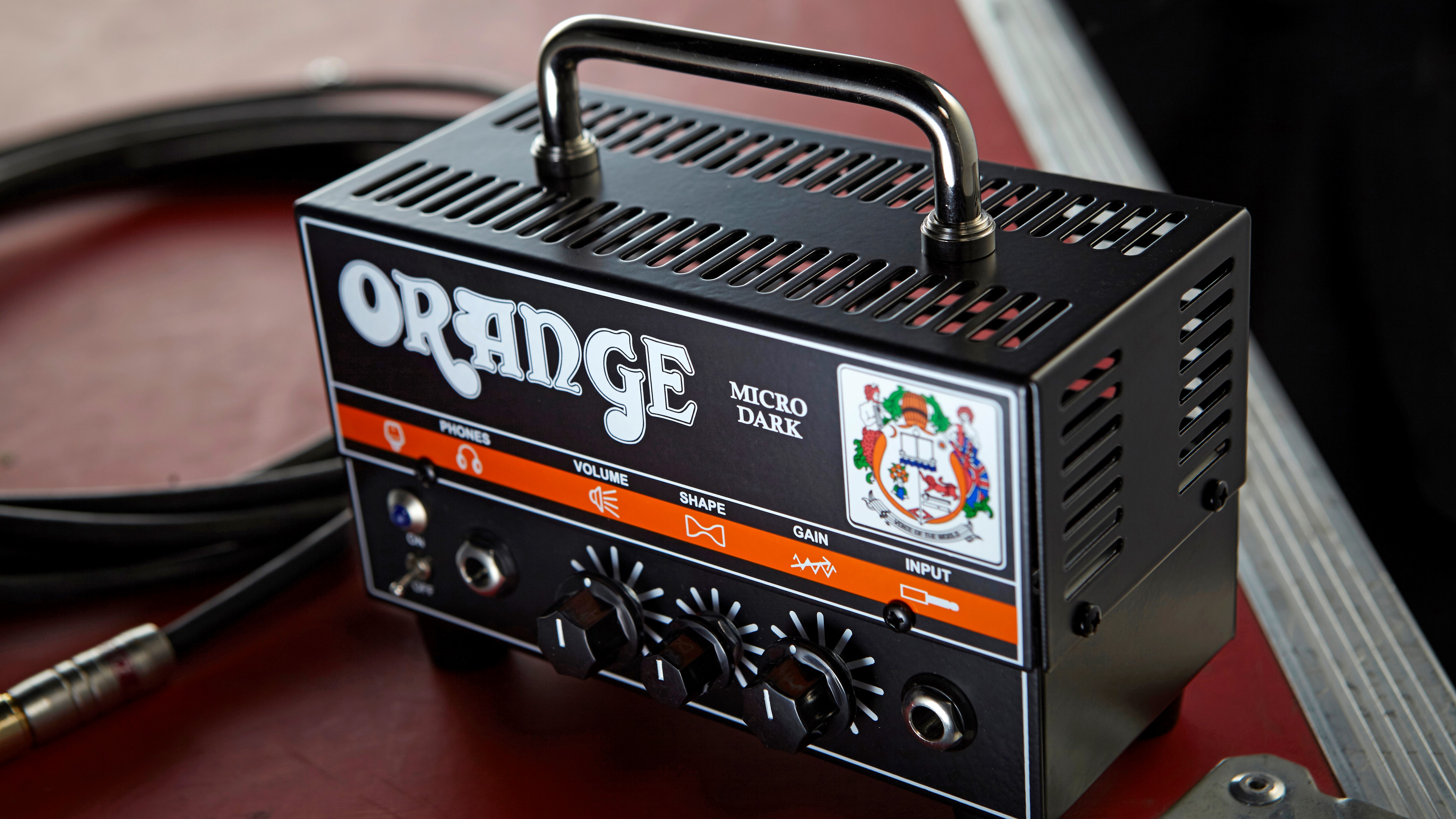
2. Orange Micro Dark
Our expert review:
Specifications
Reasons to buy
Reasons to avoid
✅Buy if you want a great budget guitar head: The Orange Micro Dark delivers bags of tone in a tiny package that doesn't cost the earth.
❌ Avoid if you don't have a cab: You can't use this on its own, so you'll need a guitar cabinet if you want to get the best out of it.
The teeny tiny Orange Micro Dark boasts a preamp driven by a single 12AX7 tube and a 20-watt solid-state power amplifier that pumps out impressively loud volume levels, with mammoth bass thump and harmonically rich grind.
The shape control produces a variety of tones by sweeping across a wide midrange sweet spot that can also enhance treble and bass as desired.
The effect loop, meanwhile, enables guitarists to patch a studio multi-effects unit, reverb, delay or modulation pedal in between the preamp and power amp sections to produce truly professional-quality tones with low noise and impressive definition and articulation that sound particularly huge when recorded.
We found the Micro Dark to be a surprisingly versatile and powerful “secret” weapon for metal guitarists who love highly saturated grind but are tired of grinding their spinal discs lifting heavy equipment.
Watch the Orange Micro Dark review video
Best budget tube amp
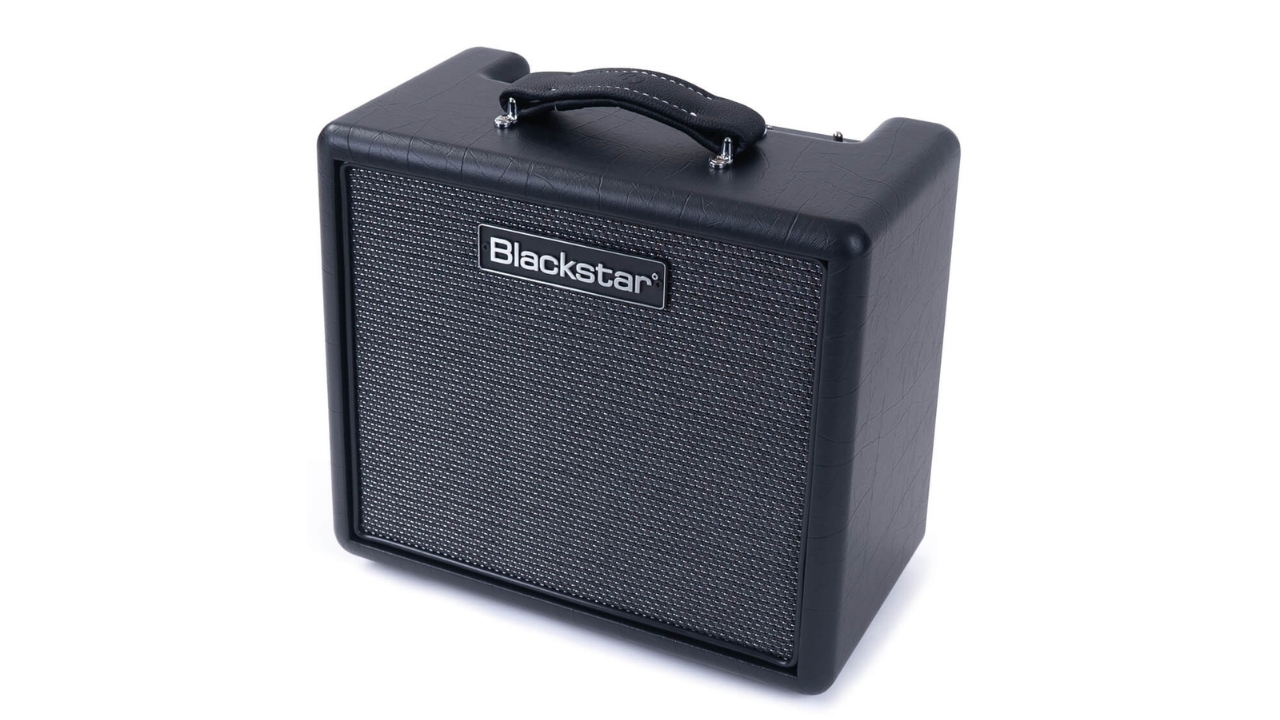
Specifications
Reasons to buy
Reasons to avoid
✅Buy if you want an affordable tube amp you can use at home: If you must have tube-tone, the HT-1R MK III is a brilliant choice. It's got loads of great features that are super useful, and most importantly it sounds great.
❌ Avoid if you're moving it around a lot: The back panel jacks are really awkwardly placed, making it a bit of a pain if you're moving it from practice to rehearsal and back again.
We loved the cuddly little HT-1R MK II, and now it got even more refined with the brand new MK III version. It may look innocuous but there’s some real grit here waiting to be unleashed.
We all know that a tube amp only comes into its own when cranked, and we also appreciate that doing that is rarely conducive to remaining on your neighbors’ Christmas card lists.
Not so with the HT-1R, because its output is rated at just one watt. It’s still surprisingly loud but doesn’t have the muscle to rattle your neighbors’ windows or their false teeth. What it does have is the potential for beautiful driven tones at lower volumes.
There are two channels. Select the overdrive channel and you can dial in anything from an articulate crunch to high-gain madness. Swap to the clean channel for American sparkle or chimey Brit tones. Both channels respond exceptionally well to dynamic playing.
The HT-1R MK III was born to live at home yet can act the perfectly behaved studio guest too. Recording big, full, high-gain tones sounds like a job for a powerful combo or stack, but a small amp can get the job done with just as much character and a lot less bother. You can either mic up the little Blackstar or take a direct feed via USB.
If you crave the sound of a real valve power amp in a home setting then the HT-1R MK III is well worth a look, and a listen. There’s also a head version if you need something even smaller for recording over USB, or if you fancy hooking it up to a cab.
Read our full Blackstar HT-1R MKIII review
Best for gigging
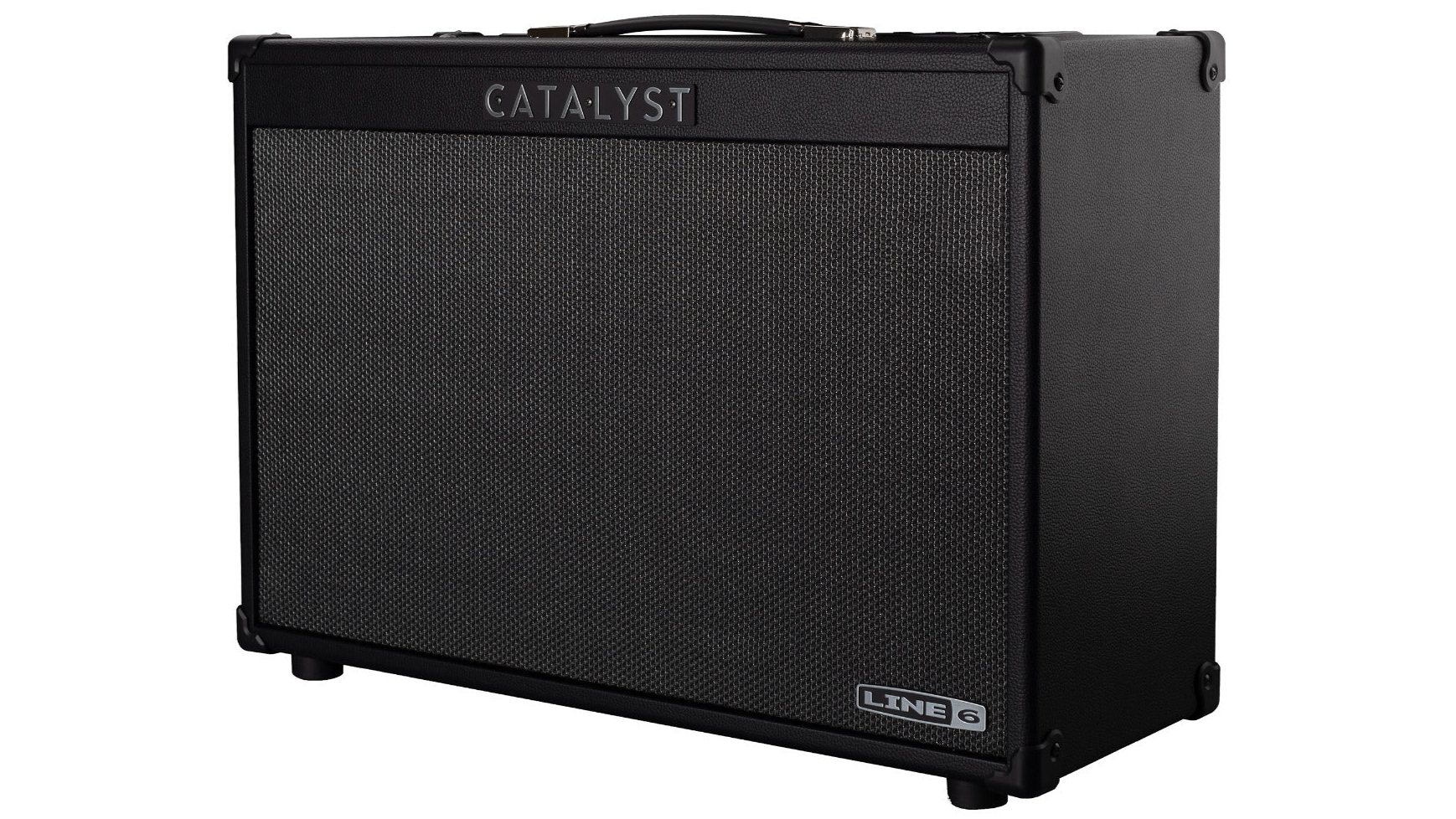
4. Line 6 Catalyst 200
Our expert review:
Specifications
Reasons to buy
Reasons to avoid
✅Buy if you want an amp powerful enough to gig: With 200 Watts of power this amp is perfectly capable of handling pretty much any gig.
❌ Avoid if you use lots of effects: The effects are really high quality with this amp, but you can only use two at a time, and one of those has to be reverb.
Line 6 have been stalwarts of the budget amp market for years, with their Spider range infamous in the guitar scene. Whilst the Spider range still exists – and is better than ever – the Catalyst line offers something a little different. Rather than a seemingly unlimited amount of options, which inevitably induces option paralysis, the Catalyst offers just 6 original amp models, which makes things a whole lot simpler.
Whilst simplicity has been emphasized, the Catalyst doesn’t skimp on features, with pro-level effects courtesy of their HX range and additions such as a 4-channel USB interface, making this serious competition for the likes of the Boss Katana range.
Whilst the range starts from 60W – which is by no means quiet – we’ve chosen the monster 200W version. This will comfortably handle just about any gig, so should be considered for anybody looking for a first gigging amplifier, or a reliable backup. With built-in attenuation right down to 0.5W, it’s just as good for home too.
Best for practice
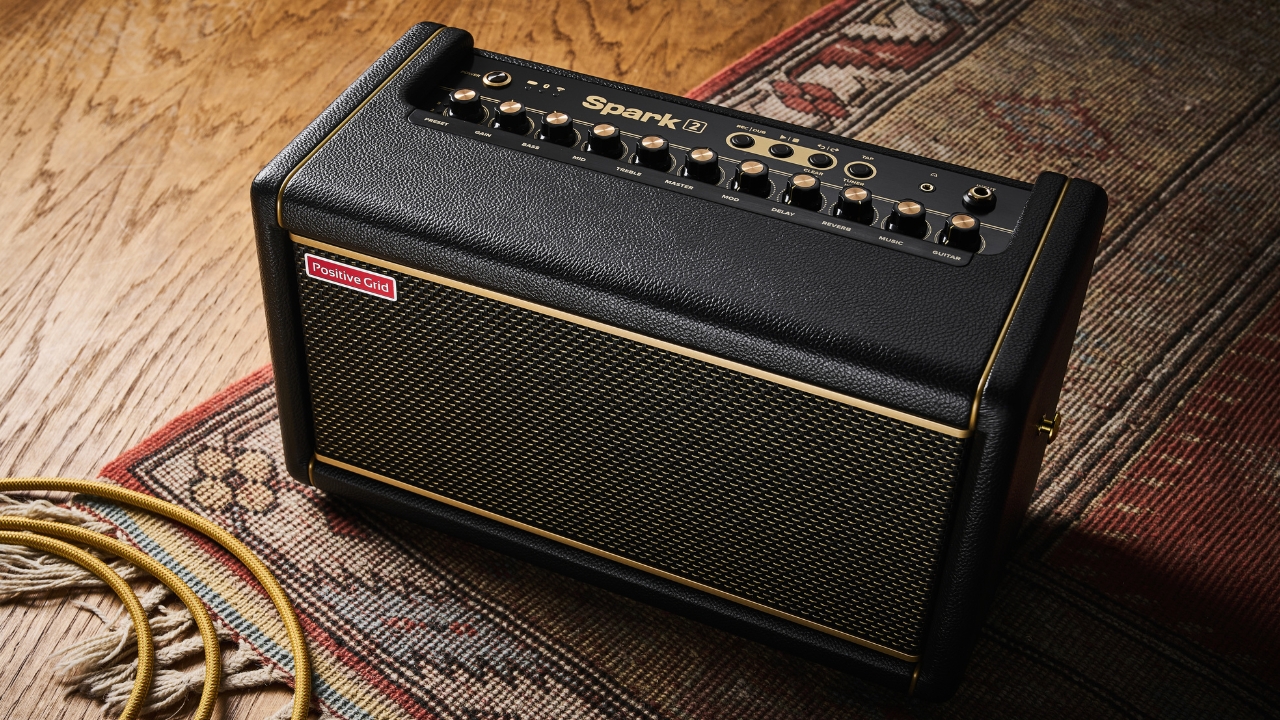
5. Positive Grid Spark 2
Our expert review:
Specifications
Reasons to buy
Reasons to avoid
✅Buy if you want to upgrade your practice regime: Packed with tones and tools to upgrade your guitar playing, Spark 2 is the ultimate practice amp for any guitarist, and unbelievable value for money.
❌ Avoid if you're planning on gigging: As big as it sounds, on its own we wouldn't want to gig with PG Spark 2 as it's so reliant on the app. You can get the Spark Cab for extra volume, however.
Positive Grid's Spark 40 took the guitar world by storm when it first arrived in 2020. That was a long time ago by modern standards, and guitarists have been calling for improvements to one of the most popular desktop amps in the world. Enter the Positive Grid Spark 2.
Addressing nearly every concern guitarists had with the original, Spark 2 is an absolute triumph. More evolution than revolution, it adds a looper, better connectivity, and some awesome extra app functionality. Most importantly, the tones sound even better thanks to better speakers and a slight upgrade in power.
It absolutely delivers on the sound front for pretty much any genre, and there's so much choice on offer in terms of amps and effects that you'll never feel short of options. The built-in looper works fantastically well, although it's much better with the footswitch which is not included. You also get an interesting AI tone generator to create bespoke sounds at your behest. Superb.
Read our full Positive Grid Spark 2 review
Best solid state
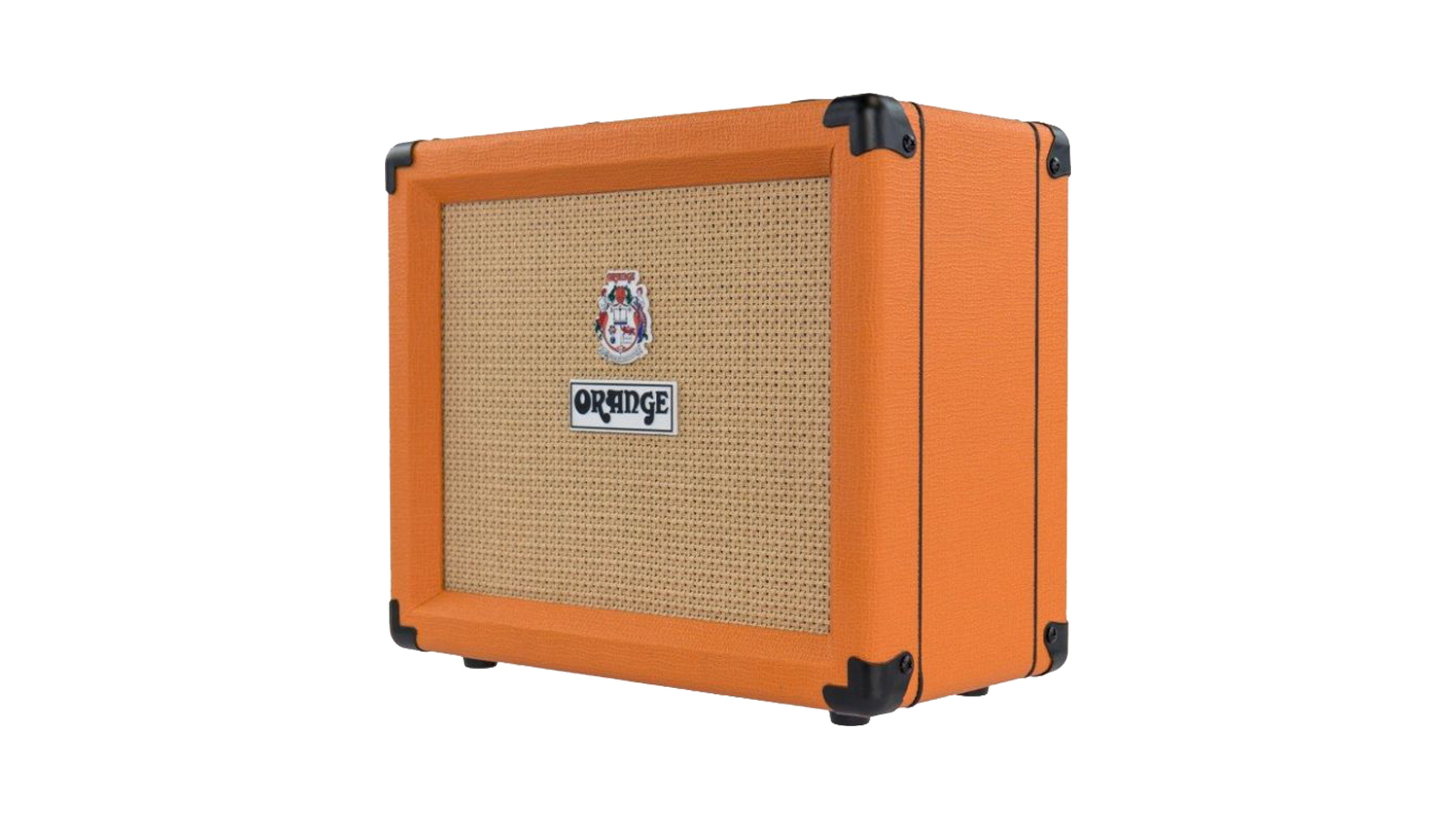
Specifications
Reasons to buy
Reasons to avoid
✅Buy if you have your own pedals: Without any effects built in, the Crush is all about providing brilliant base amp tone. Adding pedals to the mix just makes it even better.
❌ Avoid if you want an all-in-one solution: With just a clean and dirty channel, this amp might feel a little stripped back compared to some of the modeling options here.
The Orange Crush 20 is a compact and killer 1x8” combo, with the distinctive looks that we know and love. Orange’s styling is certainly a statement - and their tones live up to the same reputation - so the Crush 20 was a no-brainer for this guide.
Clean and dirty channels, a three band EQ, an aux input and a cab-sim loaded headphone output make up the Crush 20’s limited spec list, but while there may be fewer bells and whistles on the Crush than something like the Katana, this amp is all about simple, great tones, and nothing else - and that’s a priority list we like the look of.
While the 8” Voice of the World speaker won’t really cut it in a gigging context, it’s more than enough for practicing at home and will happily put up a fight against a drummer. As a practice amp, there aren’t many better solid-state combos around for the money.
Read our full Orange Crush 20 review
Also consider
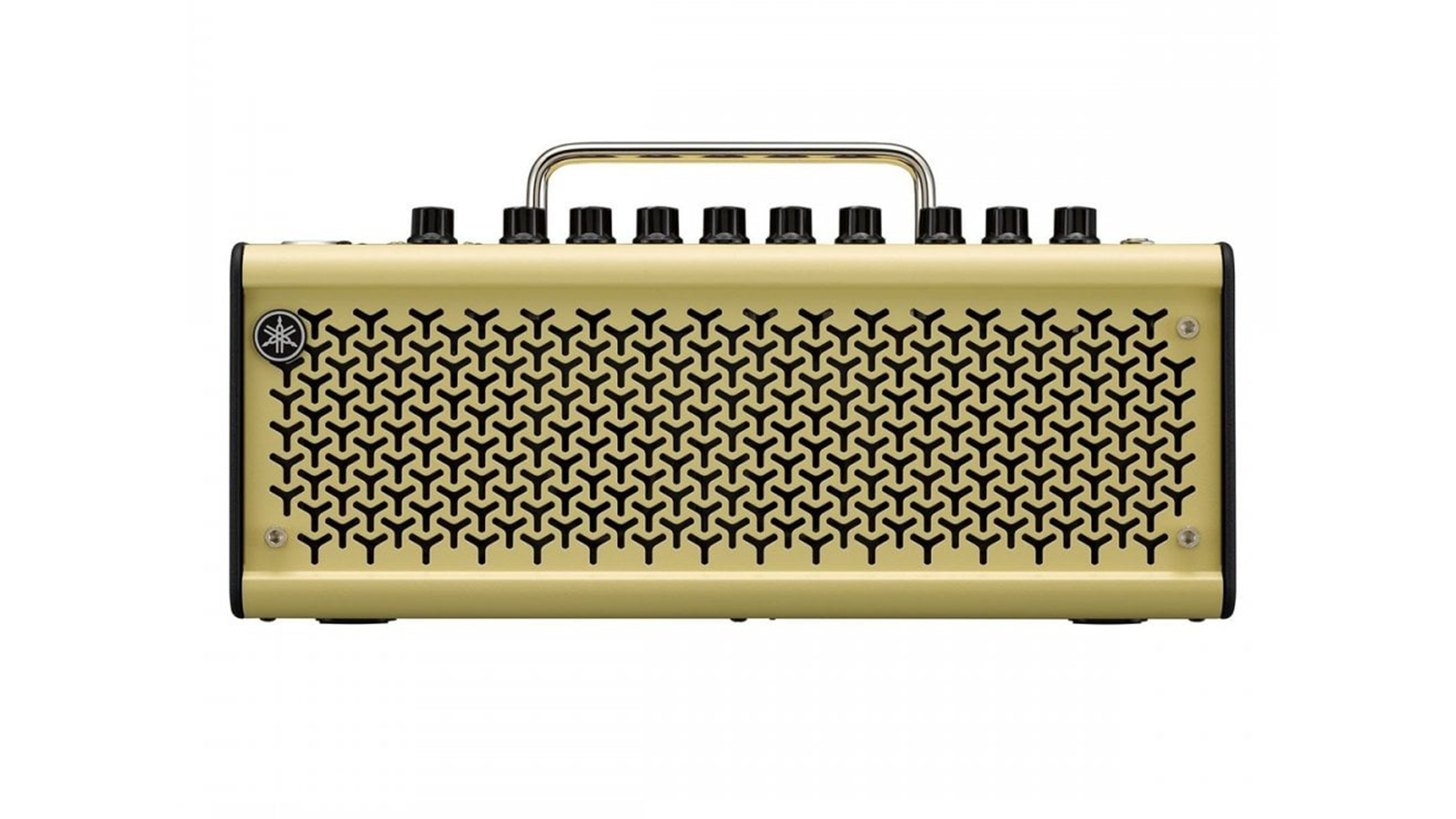
7. Yamaha THR10 II Wireless
Our expert review:
Specifications
Reasons to buy
Reasons to avoid
✅Buy if you want a wireless option: If you want to get away from the clutter of cables, this option from Yamaha is your best bet for sure.
❌ Avoid if you need more volume: The THR10 II only produces 20 watts of power, so if you require more volume for jamming, then you'll need to look at an alternative.
Yamaha’s toaster-sized THR amps are a complete joy to both use and listen to. This one, the THR10 II Wireless, sits just below its top-of-the-line 30-watt sibling, which is just a smidgen too pricey to include in this guide.
Despite the THR10 moniker, there’s actually 20 watts on tap here, which is more than enough for practising at home. Provided you and your chums are into one of the more serene musical genres, such as some forms jazz, folk or country, that’s possibly just enough oomph for band practice. However, unless you mic it up it’ll struggle with live performance.
No matter, Yamaha designed this amp to look good and sound great in the home. It’s fantastic at both. Its appearance, in our opinion, remains peerless for a desktop amp, and it will happily complement almost any style of domestic décor.
And the sounds? Yamaha’s music division robbed the brand’s home entertainment division of all its best ideas so that the pair of small 3.1” (8cm) full range stereo speakers would sound their best. Which they do – this thing sounds incredible, with the driven sounds sounding especially impressive for such a small amp.
You get to choose from 15 guitar amp models, three bass amp models, three mic models for acoustic/electrics and flat voicings for other instruments such as keys. There’s also a generous handful of on-board effects plus a compressor and noise gate accessible via the THR mobile app. Unlike its bigger, more expensive brother there are no line-outs, which is a shame, but there is USB, allowing the THR 10II to act as an audio interface. There’s also an Aux In and Bluetooth connectivity.
The icing on the cake is its wireless capabilities and its powerful, rechargeable battery. Just imagine noodling away for hours anywhere in your home, completely unhindered by cables of any sort…
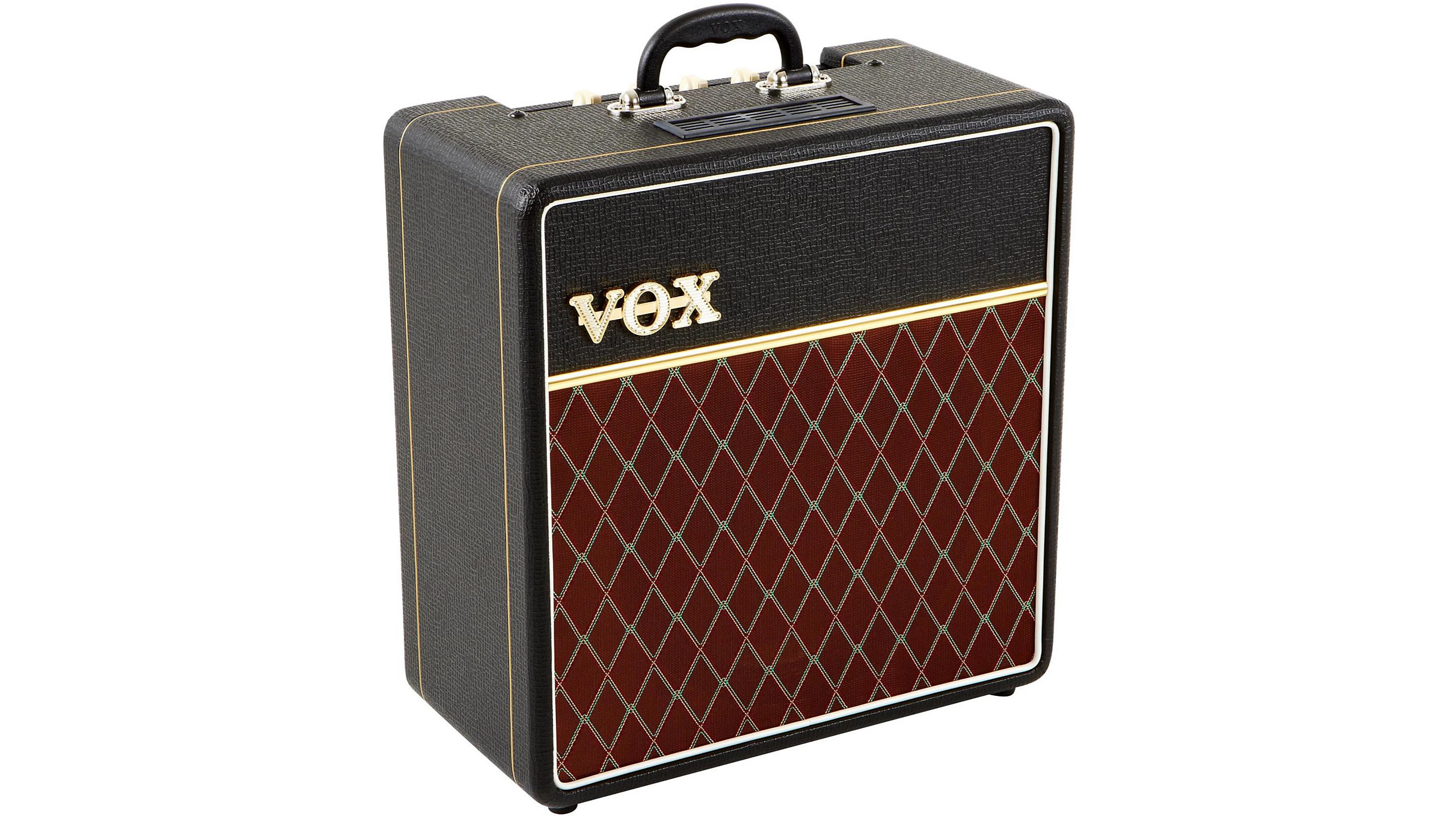
8. Vox AC4 C112
Our expert review:
Specifications
Reasons to buy
Reasons to avoid
✅Buy if you want classic Vox sounds on a budget: This miniature tube amp delivers the classic twang you associate with Vox, just in a smaller format.
❌ Avoid if you want modern features: While this amp certainly sounds good, it is lacking in the feature department.
The Vox AC4 has been part of their catalog since the ’60s, offering a smaller way of getting the all-tube tone for which Vox is beloved. The only issue with the standard AC4 is that the 10” speaker can feel a little unimpressive. This is not the case with the AC4 C12, which features an upgraded 12” Celestion speaker.
The 4W of tube power shouldn’t be sniffed at and the 12” does a far better job at shifting air when compared to its predecessor. Those extra 2 inches produce a much better low-end response, and when cranked, you can really feel that classic Vox power section howling – immense! And if that isn’t enough oomph, there is even an external speaker output, which means you can shift some serious air with an additional cab – dare we say, you might even do smaller gigs with this setup.
The lack of reverb in an amp of this size isn’t a surprise, but an effects loop would have been nice, particularly as it doesn’t take much to drive this amp into overdrive – it hasn’t got loads of headroom – which may muddy up time-based effects running into the front end. We’re splitting hairs really though. As a home practice amp, this is a superb option for Vox fans, and it will shine in the recording studio!
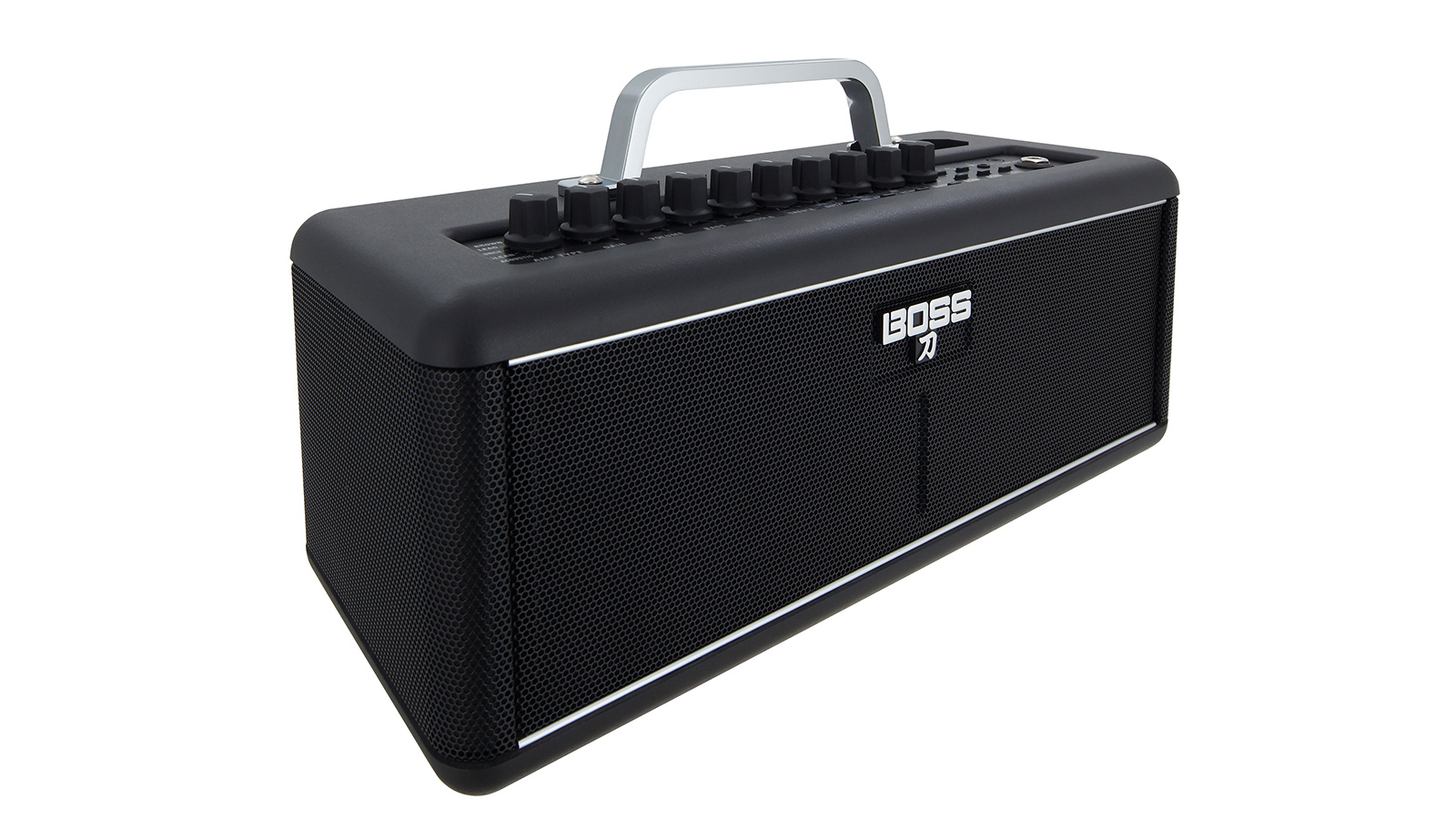
9. Boss Katana Air 20/30 Wireless
Our expert review:
Specifications
Reasons to buy
Reasons to avoid
✅Buy if you want a portable option: The Boss Katana Air 20/30 Wireless offers the same great sounds as the larger Katana but in a much more portable format.
❌ Avoid if you don't need it to be portable: If portability isn't a factor for you, then you are better with the standard Katana.
The Katana Air is a desktop amp developed in the same vein as Yamaha’s pioneering THR series, albeit one that looks a little less ‘hi-fi’ and a little more traditional guitar amp. It’s a dark yet attractive look that some may favour over Yamaha’s slightly more showy aesthetic.
Just like Yamaha, Boss (a sister brand of Roland) is held in extremely high regard for the quality of its modelling and the Katana Air doesn’t disappoint. Its five amp characters, which are derived directly from Boss’ Katana stage amplifier line, doesn’t sound like many but they actually provide the full gamut of tones from sparkly cleans to modern ultra-high gain. There’s also an Acoustic Character setting for acoustic/electric playing and 50, yes 50, available effects to shape your tone. And we all know how good Boss effects are.
Like the THR, the Katana Air can be operated wirelessly for tether-free playing, but unlike the Yamaha the transmitter is bundled with the amp, which saves quite a wedge of extra cash. However, although the Katana Air can run on battery power you’ll need to feed it a ready supply of AAs as it doesn’t have a rechargeable battery built-in.
There’s Bluetooth for streaming music from other devices, and a Boss Tone Studio smartphone amp that takes a lot of the complexity out of configuring it. As well as saving you from having to reach for the physical controls.
The Katana Air also has a phones/recording out with cab simulation for silent practice or recording your best efforts. It’s even possible to alter the mic position on the cab sim using the phone app.
Read our full Boss Katana Air review
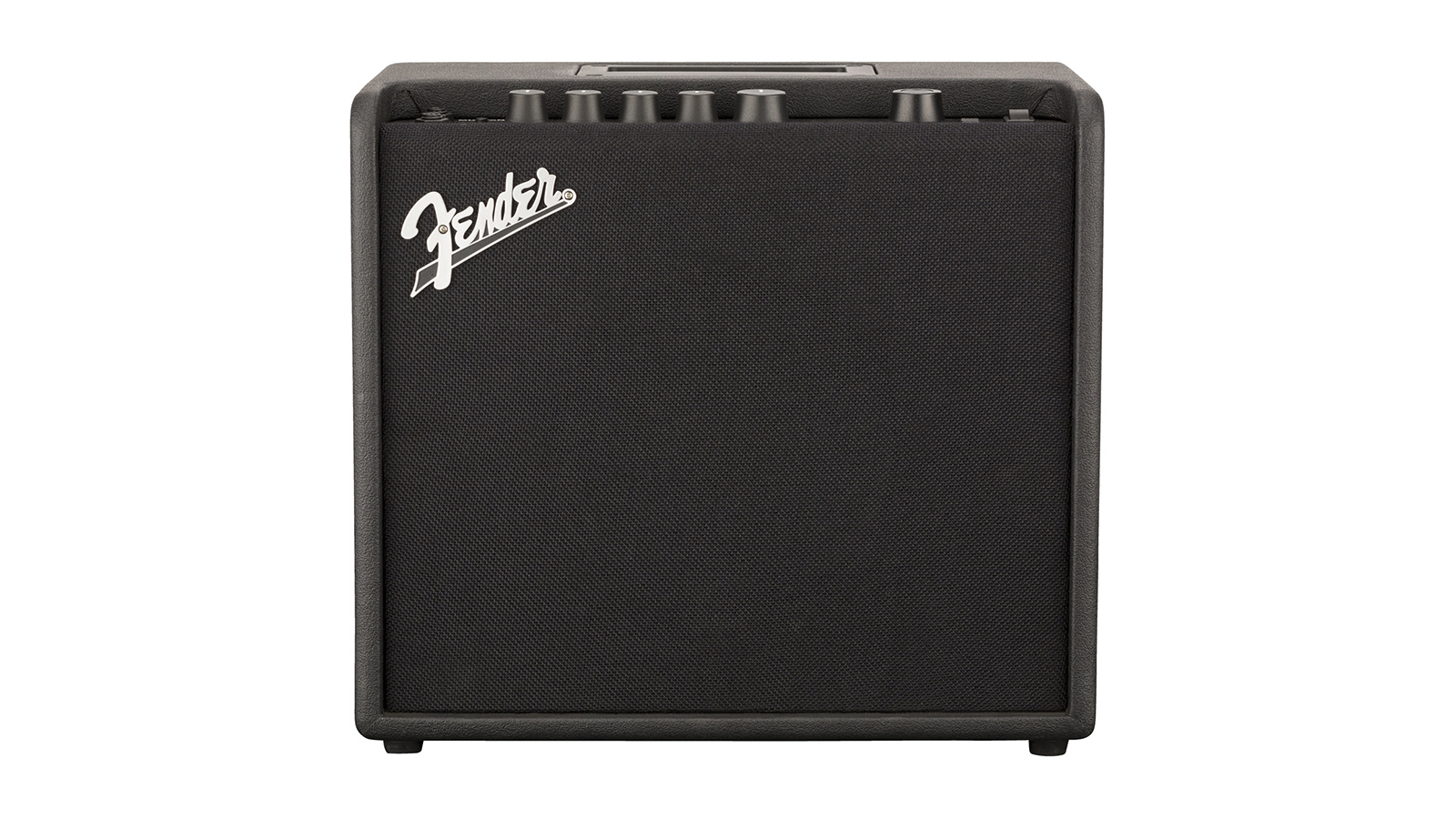
10. Fender Mustang LT25
Our expert review:
Specifications
Reasons to buy
Reasons to avoid
✅Buy if you want a modern amp that's easy to use: The LT25 is incredibly intuitive to operate, even for complete beginners.
❌ Avoid if you don't want a digital amp: If you are seeking the warm sound of tubes, you won't get it here.
Fender is no noob when it comes to modeling amps and its Mustang series has always been impressive in terms of features, sound quality and ease of use. The LT25 is a portable modeling combo featuring an eight-inch speaker, 20 amp models, 25 effects, USB connectivity and an auxiliary input.
You’ll find 30 presets on-board presets, easily selectable using the large encoder to the right of the amp’s screen. These presets can be tweaked and your custom profile saved with ease.
There are plenty of Fender’s typically smooth, bright and clean sounds on offer here, but we loved the chunkier high gain emulations on offer too.
In terms of effects, you get everything from compression and gates, through to octave, auto-wah, delays and reverbs. If you’re a beginner or a student, for this price, you can’t go wrong.
Read our full Fender Mustang LT25 review
FAQs
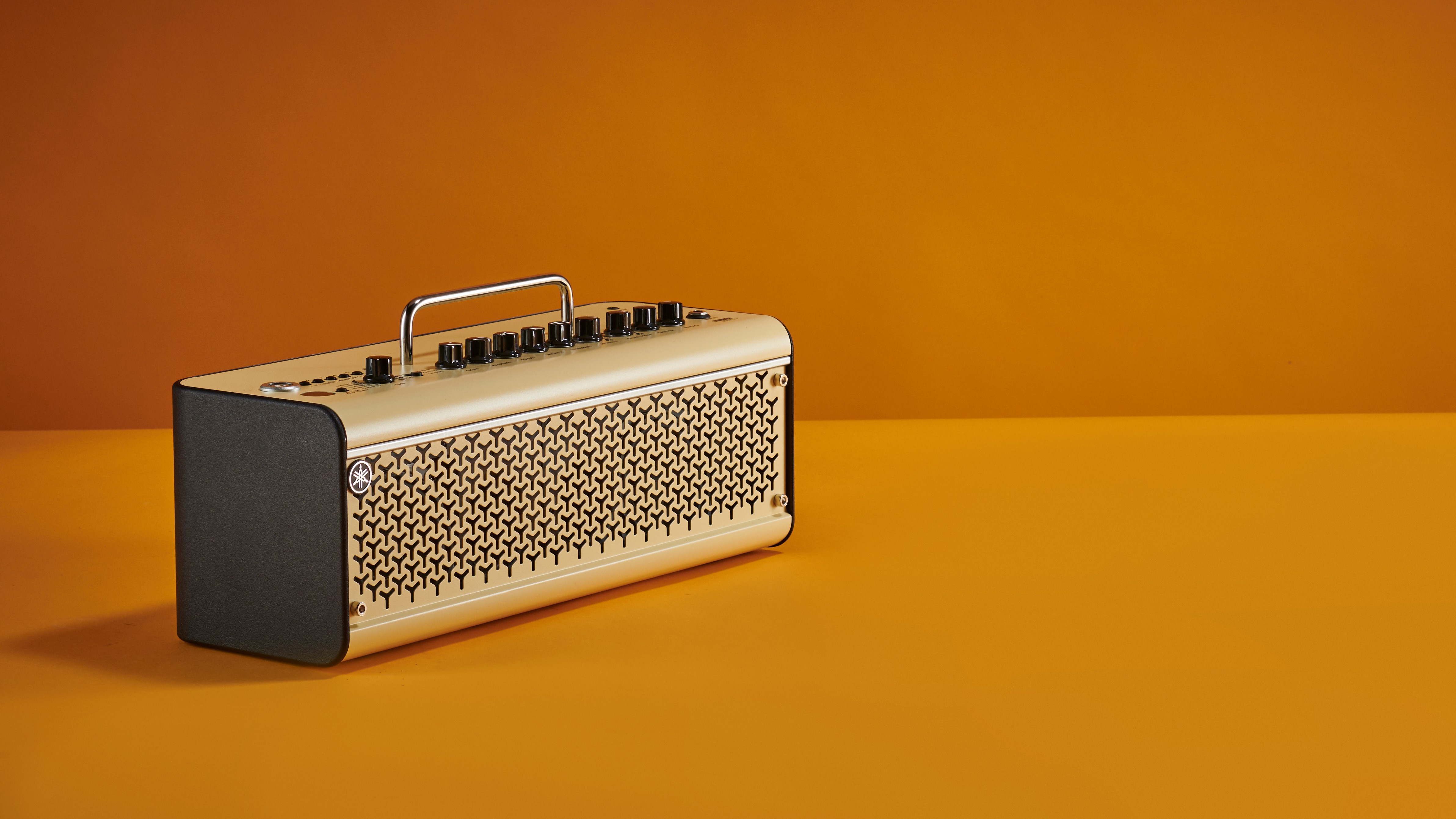
What to look for in the best budget guitar amps
You can trust Guitar World
With more options than ever before in the budget guitar market, choosing the right amplifier for you may be a challenge. Some amps at this price point won’t necessarily do everything you want them to, but excel in certain areas, while others will be jacks of all trades, equally happy being used on stage, at home, or in the studio.
If you’re a beginner, you may be better looking at the latter; an amp that can do it all and gives you a great platform to explore all facets of being a guitar player. If, however, you are an advanced guitarist, who already has a crushing live rig, but is looking for something more suitable for use at home, or on the move, there are plenty of amps designed specifically for those purposes.
What size amp do you need?
Power ratings and amp sizes can seem to make little-to-no sense for beginner guitarists. If we were to tell you that a 5W tube amp could easily be louder than a 30W solid-state amp, you’d have every right to ask, ‘why?’.
In general, you will struggle to find a tube amplifier that will really comfortably compete with a live band for under $500 – you’d probably be looking at a 10-15W minimum there. Meanwhile, you could pick up a 50-100W solid-state amplifier that should do the job for you on stage.
What size speakers do I need for my guitar amp?
While speakers alone aren’t the only thing that creates ‘volume’, having a larger speaker – or even multiple speakers – produces more low end, which often contributes to the feeling of greater volume.
Some amps may have the option to add additional speakers through a speaker line out on their rear, which means you can plug the amp into something much larger. For example, a small 5W tube amp with a 10” speaker may sound a little boxy on its own, however if it has a speaker out (as many do) it could be used to power a 4x12” cab, which should get far more air shifting and feel a lot louder – though you may still struggle at a gig.
Some desktop amps – such as the Yamaha THR series – take learnings from hi-fi equipment, option for a combination of smaller speakers which, when paired together, create beautifully nuanced sounds and can produce stereo effects, which both sounds excellent and opens up a new world of creativity, all at home-friendly volumes.
What tone should I look for?
While it could be tempting to turn your nose up at small, relatively quiet tube amplifiers in this price range, one thing they do deliver is genuine, warm tube tone at home-friendly volumes. To do this with a typical, deafening valve amp – think Vox AC30 or Fender Hot Rod Deluxe – you’d need to buy an additional attenuator, which puts a simulated load between your amplifier, bringing the volume right down – though it is worth saying more and more modern tube amps have some kind of power attenuation built in.
The combination of costs of a large tube amp and a good attenuator – which alone can be more than some of our amp picks – is rather daunting, whereas a smaller tube amp, such as the Blackstar HT1R, will produce the classic tube tones we’ve all come to love even at low volumes. If you are looking for something particularly clean, even at slightly higher volumes, these lower-wattage tube amps may not quite cut it though, as they break up into overdrive pretty quickly. If you want it squeaky clean, sub-$500 tube amps probably won’t be the best choice.
If tubes aren’t your thing, or volume is a priority, many of the best amps under $500 are modelers, which have plenty of power. A modeler (or modeling amp) is an amplifier that will have carefully crafted amp emulations, which will reproduce the sounds of classic amplifiers and may give the illusion that they may be tube-loaded, through the way they react to your playing, the use of pedals, and loads of other clever things – these things are smart!
This is a great option to get a variety of sounds, from spanky cleans to crushing overdrives, all of which should sound natural and authentic – though it is worth saying, that not all modeling amps are made equal, check out our guide to the best modeling amps to find the most impressive on the market.
One amp tone that is often under-appreciated – particularly following the emergence and continued improvement of modeling amps – is the humble solid-state amplifier. These are amps that don’t have either tubes or digital modeling circuitry, rather they will have transistors to create their sound. In recent years, the solid-state has had a renaissance of sorts and now some of the best ‘cheap’ amps you can get are solid-state, such as the Orange Crush range. These forgo the potential confusion that modeling amps can produce, instead giving a super simplistic way to produce great tones.
Transistor tech has come a long way, and they have far more nuance than in the past, even sounding pretty close to their tube counterparts. Historically, they’ve been somewhat shunned for their drive tones – which is an acquired taste – however, this has improved greatly and now they excel at high-gain tones. If you’re after analog simplicity, with bags of tone, the solid-state transistor amp is definitely one to consider.
Are budget guitar amps good?
A few years ago, our answer might have been a little different, but that’s all changed. The budget guitar amp market is better than it’s ever been, with even discerning professional players investing in affordable guitar amps, as an option for home or on the road.
$500/£500 can now get you a convincing modeling amp, that produces superb tones and has feature sets that will blow equivalent amps from even 15 years ago totally out of the water. The Boss Katana range is perhaps the best example of this; you can get a gig-ready modeler, with a range of industry-standard effects built in, with enhanced editing capabilities through an app, plus a built-in audio interface featuring cab simulation… all for under 500 bucks. That’s simply insane.
One thing that has historically let down budget amplifiers is that they look their price – cheap. But the likes of Yamaha’s THR range have totally changed that – these are amps you would be proud to have on display at home.
Which brands make the best budget guitar amps?
While there are plucky upstarts who have come onto the scene and released game-changing products in the budget amp space – Positive Grid for example – it’s fair to say that the old guard has really embraced the lower end of the amplifier market in recent years.
Following the release of the Boss Katana range in 2016, manufacturers such as Marshall, Line 6 and Fender have all been working their hardest to try and match their offering with the Katana – It's really that good.
This competition is brilliant news for us players! Near enough all of the ‘bigger’ brands produce superb amplifiers in the sub-$500 arena, and most (if not all) are definitely worth considering.
Should I buy a tube or solid-state amp?
For some, tube amps are the real deal, everything else is just fakery. It is true that there’s nothing quite as gorgeous as the sound of a genuine tube amp, whether it’s clean, lightly cranked or running at full chat.
It’s also true that good tube amps tend to be pricey, which is why you won’t find that many in this guide. Those that do fall under $500 tend to be small, ultra-low powered and fairly basic in operation, which is fine if you’re a house-bound tone hound who’s just looking for the most authentic sound at a manageable volume.
In the early days, solid-state amps were fantastic if you were after very articulate clean tones – think the legendary ‘70’s Roland Jazz Chorus JC 120 – but awful for more gainful employment. They just fizzed like farting wasps.
These days though, thanks to modern modelling technology, they can be simply superb. Even below the $500 mark, you’ll find many, many fantastic examples. They also tend to be small and low on power, which is exactly what you want for a practice or recording amp.
One advantage that modelling amps do have is that they tend to come loaded to the gunwales with different amp emulations, effects and cab sims – often managed by a smartphone app. Despite this, many still prefer the more limited sound and simplicity of a basic tube amp.
Be aware that, because of their very different circuitry, a 5W tube amp can be just as loud if not louder than a 30W solid-state amp. In fact, 1W of tube power can be plenty in a home environment, while a 30W solid-state amp will probably struggle to be heard in a live performance.
To sum up, neither valve or solid-state is better, just different. Only you can choose.
What ins and outs do I need?
If you’re after a guitar amp for less than $500, it’s definitely worth looking out for one equipped with a USB socket. USB can be invaluable for firmware upgrades and it will often carry audio as well as data. The advantage of this is that it enables you to use your new guitar amp as an audio interface, recording your chops directly into a DAW or other software.
Some practice amps may have a phones/rec out jack instead (or, as well as). You’ll also be able to record via this jack but will need an audio cable and a separate interface.
If you’re lucky, you may even find your amp has proper XLR line-outs so that you can hook it up to a PA system for live performance. There’s no lighter stage rig than a small, good-quality practice amp equipped with a couple of line-outs.
How we test
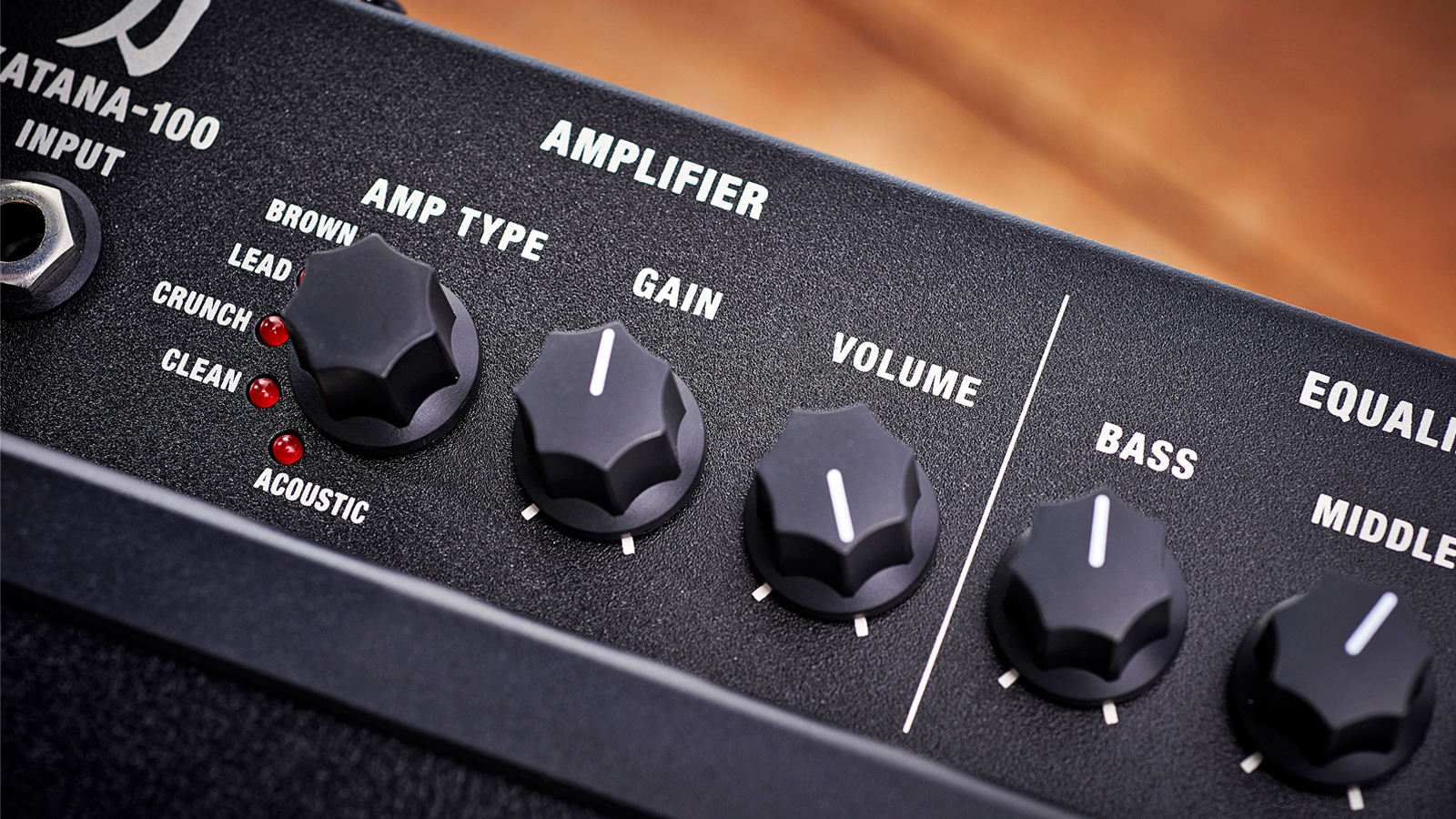
Here at Guitar World, we are experts in our field, with many years of playing and product testing between us. We live and breathe everything guitar and bass related, and we draw on this knowledge and experience of using products in live, recording and rehearsal scenarios when selecting the products for our guides.
When choosing what we believe to be the best budget guitar amps available right now, we combine our hands-on experience, user reviews and testimonies and engage in lengthy discussions with our editorial colleagues to reach a consensus about the top products in any given category.
First and foremost, we are guitarists, and we want other players to find the right product for them. So we take into careful consideration everything from budget to feature set, ease of use and durability to come up with a list of what we can safely say are the best budget guitar amps on the market right now.
Read more about our rating system, how we choose the gear we feature, and exactly how we test each product.
Related buyer's guides
- Spend a bit more on the best guitar amps under $1,000
- Check out our pick of the best beginner electric guitars
- Freedom on a budget: the best cheap wireless guitar systems
- On a budget? Try the best cheap electric guitars under $500
- The best tube amps under $500
All the latest guitar news, interviews, lessons, reviews, deals and more, direct to your inbox!

Mike has been Editor-in-Chief of GuitarWorld.com since 2019, and an offset fiend and recovering pedal addict for far longer. He has a master's degree in journalism from Cardiff University, and 15 years' experience writing and editing for guitar publications including MusicRadar, Total Guitar and Guitarist, as well as 20 years of recording and live experience in original and function bands. During his career, he has interviewed the likes of John Frusciante, Chris Cornell, Tom Morello, Matt Bellamy, Kirk Hammett, Jerry Cantrell, Joe Satriani, Tom DeLonge, Radiohead's Ed O'Brien, Polyphia, Tosin Abasi, Yvette Young and many more. His writing also appears in the The Cambridge Companion to the Electric Guitar. In his free time, you'll find him making progressive instrumental rock as Maebe.
- Matt McCrackenJunior Deals Writer
- Connor Godfrey
